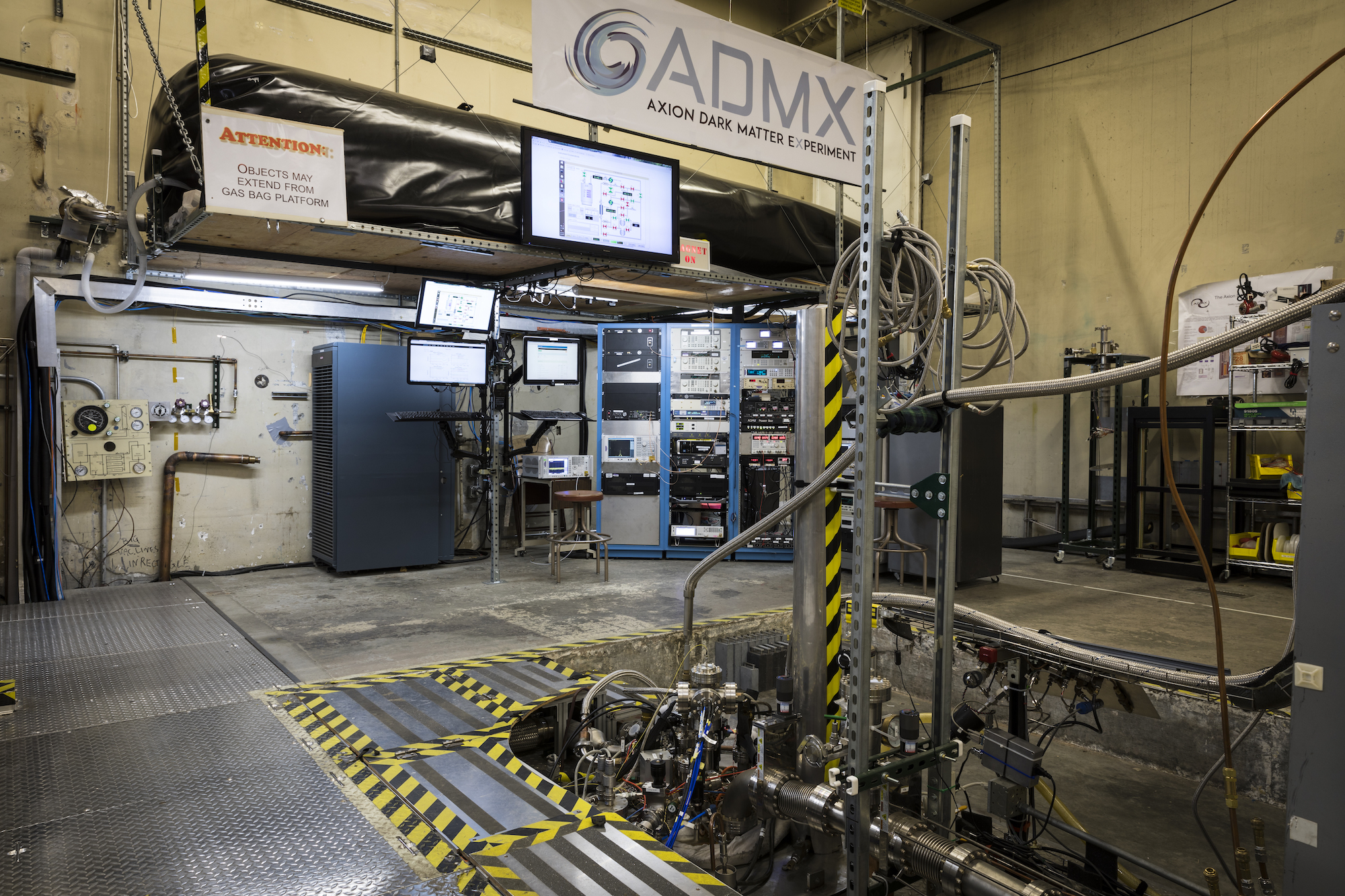Super-Sensitive Device Seeks Axions, Proposed Dark Matter Particles

U.S. physicists say they have successfully tested the first experiment sensitive enough to detect axions — hypothetical particles that some scientists think make up the dark matter holding galaxies together.
The Axion Dark Matter Experiment (ADMX), which is located at the University of Washington in Seattle, represents a breakthrough in a four-decade-long search for the theoretical particles, the new study's scientists said. "It's really quite exciting to think discovery could come at any time," Gray Rybka, a physicist at the University of Washington and a co-author on the new work, told Space.com. "Now, we're really right there. When we see a blip — and we see blips periodically because of either interference or scheduled fake signal injections to make sure the thing is working — suddenly it's, this really could be it." [Dark Matter and Dark Energy: The Mystery Explained (Infographic)]
Rybka said the discovery of axions could play as significant a role in transforming our understanding of the universe as the recent detection of gravitational waves."As soon as we see a signal, [and look at] the kind of shape and how that signal changes over time, we'll be actively probing what dark matter is doing in our region of the galaxy," he said. "It will be able to give us information about how galaxies form and what dark matter is doing."
Axions are believed to be extremely low-mass particles that stream through space and rarely interact with ordinary matter. Their signals are extremely faint, making detection very difficult, according to a statement on the new work from the National Radio Astronomy Observatory."It's roughly equivalent to the signal power you'd get from someone using a cellphone on Mars," Rybka said.
ADMX operates like the tuner of an AM radio, slowly cycling through different frequencies until it detects a signal. The experiment uses a strong magnetic field and a tuned, reflective box that encourages the conversion of axions to microwave-frequency photons. An amplifier is then used to "listen" for the sound of the conversion.
The experiment is cooled down to 0.1 Kelvin, or roughly minus 460 degrees Fahrenheit (minus 273.3 degrees Celsius), to eliminate noise caused by thermal radiation.

ADMX's secret sauce is its ability to reduce noise from the amplifier, according to the statement. Previous experiments had used standard semiconductor transistor amplifiers, whose noise made it difficult to detect axions. It was a vexing problem made more difficult by a lack of resources to solve it."The people who look for dark matter, it's not a huge community," Andrew Sonnenschein of Fermi National Accelerator Laboratory (Fermilab), the operations manager for ADMX and a co-author on the study, told Space.com. "We're not like Microsoft .... We don't have thousands of people able to turn over a whole new product line every couple of years. So, we look to the outside for technology developments that might help us."The researchers found a solution in the field of quantum computing. "Those people are doing such amazing things with the manipulation of single photons and superconducting quantum circuits," Sonnenschein said. "They're developing a very sophisticated technology for manipulating single microwave photons, which is exactly what you need to discover axions."
Get the Space.com Newsletter
Breaking space news, the latest updates on rocket launches, skywatching events and more!
Enter John Clarke, a professor of physics at the University of California, Berkeley graduate school. Clarke is a pioneer in developing sensitive magnetic detectors called superconducting quantum interference devices (SQUIDs).
Clarke designed a micro-strip SQUID amplifier (MSA) that has been incorporated into ADMX. The MSA reduces the noise by a factor of 30, meaning that signals from axions should be detectable if they exist.
Rybka said scientists ran ADMX using the new MSA from January 2017 to August 2017 to demonstrate that the amplifier was effective in reducing noise.
ADMX operates 24 hours per day. Rybka said the most recent run began in January and will continue into this summer, when it will be shut down for maintenance. The experiment is funded for another three years.
Although axions could be discovered next week, Sonnenschein said scanning all the frequencies where they might exist could take many years. "The exciting range for axions, we think, is from where we are now, which is at around 1 gigahertz, up to several hundred gigahertz," he said.
Rybka noted that with higher frequencies come higher noise levels, making the experiment more difficult at those levels. Research and development is underway to develop new technologies and methods for scanning these frequencies."If we're lucky, we'll find the axion in this lower-frequency range, and [that will] save us the trouble of the tougher experiment," he added.
The new work was detailed in April in the journal Physical Review Letters. Follow us @Spacedotcom, Facebook and Google+. Original article on Space.com.
Join our Space Forums to keep talking space on the latest missions, night sky and more! And if you have a news tip, correction or comment, let us know at: community@space.com.
Douglas Messier is the managing editor of Parabolicarc.com, a daily online blog founded in 2007 that covers space tourism, space commercialization, human spaceflight and planetary exploration. Douglas earned a journalism degree from Rider University in New Jersey as well as a certificate in interdisciplinary space studies from the International Space University. He also earned a master's degree in science, technology and public policy from George Washington University in Washington, D.C. You can follow Douglas's latest project on Twitter and Parabolicarc.com.









